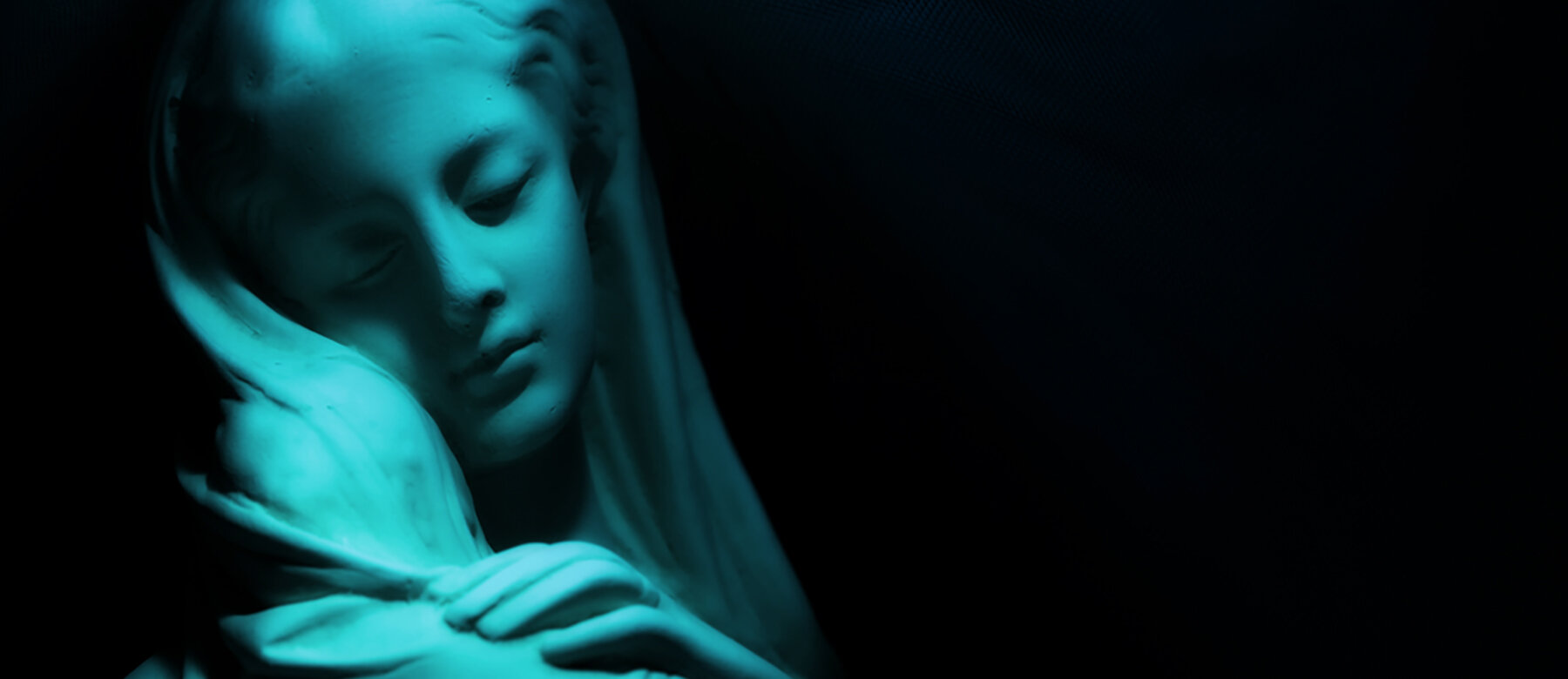“What a joy to remember that she is our Mother! Since she loves us and knows our weakness, what have we to fear?” – Saint Therese of Lisieux
What is Marian Devotion?
A Marian devotion in Christianity is directed to the person of the Blessed Virgin Mary. The term "devotions" is commonly understood to refer to those external practices of piety by which the faith of an individual finds expression.
Such prayers or acts may be accompanied by specific requests for Mary's intercession with God. There are many Marian devotions, ranging from multi-day prayers such as novenas, the celebration of Canonical coronations granted by the Pope, the veneration of icons in Eastern Christianity, and pious acts which do not involve prayers, such as the wearing of scapulars or maintaining a Mary garden.
Devotion to the Virgin Mary does not, however, amount to worship - which is reserved for God; e.g., both Catholics and the Eastern Orthodox view Mary as subordinate to Christ, but uniquely so, in that she is seen as above all other creatures. In 787 the Second Council of Nicaea affirmed a three-level hierarchy of latria, hyperdulia and dulia that applies to God, the Virgin Mary and then to the other saints.
Marian devotions are important to the Roman Catholic, Orthodox and Anglican traditions, but most Protestant views on Mary do not accept them, because such devotions are not recorded or promoted in the Bible. They believe this devotion may distract attention from Christ. There is significant diversity of form and structure in Marian devotions practiced by different groups of Christians. Orthodox Marian devotions are well-defined and closely linked to liturgy, while Roman Catholic practices are wide-ranging.
Roman Catholicism
Marian devotions are prominent within the Roman Catholic tradition. Pope Paul VI began his Apostolic Exhortation Marialis Cultus saying, "From the moment when we were called to the See of Peter, we have constantly striven to enhance devotion to the Blessed Virgin Mary".
In Rosarium Virginis Mariae, Pope John Paul II emphasized the importance of Marian devotions: "Since Mary is of all creatures the one most conformed to Jesus Christ, it follows that among all devotions that which most consecrates and conforms a soul to our Lord is devotion to Mary".
At the popular level, for centuries books such as True Devotion to Mary have built a ground swell of Marian devotions among Catholics, to the point that tens of millions of pilgrims visit Marian shrines every year. The statue of our Our Lady of Zapopan attracts over one million pilgrims on 12 October each year as the statue travels through the streets moving from one cathedral to another.
Marian devotions can take a unifying national dimension, e.g., devotion to Our Lady of Guadalupe is a national symbol in Mexico, and in 1979 Pope John Paul II placed Mexico under her protection. Similarly, national devotions to Our Lady of Šiluva resulted in Lithuania being formally consecrated to Mary by Cardinal Sladkevicius and the Chairman of the Lithuanian Parliament, in September 1991.
The Virgin Mary at Marylake. Photo: Tony Battaglia
Marian devotions are also associated with a number of beliefs among Catholics which have not been dogmatically approved by the Church, but have been asserted by saints and theologians. An example is the belief that devotion to Mary is a sign of predestination. Saint Bernard of Clairvaux in the 12th century, Saint Bonaventure in the 13th century, and Saint Alphonsus Ligouri in the 18th century affirmed this belief, and 20th century theologian Reginald Garrigou-Lagrange, who taught Pope John Paul II, supported it with modern theological arguments regarding the "signs of predestination".
Types of Devotions
Marian devotions among Roman Catholics are numerous and have diverse cultural dimensions. While there are many well-known devotions, there are many small, local and regional devotions. At the top level Catholic Marian devotions may be categorized into the following non-exclusive groups, based on the characteristics of the devotion:
The Liturgical Calendar
Practically all Marian devotions and pious exercises are in some way related to the liturgical feasts of the General Calendar of the Roman Rite or of the particular calendars of dioceses and religious congregations. Saturdays are dedicated to the Virgin Mary, designated as memorials of the Blessed Virgin Mary. This practice derives from Carolingian times (9th century). The month of May has been traditionally dedicated to Mary.
Prayers
The Angelus is a traditional prayer used to commemorate the Annunciation of the angel Gabriel to Mary. It is used three times daily: at dawn, mid-day and at dusk. During Eastertide, the Angelus is replaced with the Regina Coeli an antiphon, dating from the tenth or eleventh century. The Rosary, or Psalter of the Blessed Virgin Mary is essentially a contemplative prayer. The Litany of Loretto is the most well-known Marian litany.
Processions
Christians have often conducted processions honoring Mary. These processions have been largely restricted to Catholic and Orthodox cultures since the 16th century. In Los Angeles, California, a Marian procession took place annually for about the first 100 years following the founding of the city in 1781.
Other Devotions
Doctrine-based: These include the defined doctrines of Mary as Mother of God, Mary ever virgin, Mary conceived without sin, Mary assumed into heaven. The devotions may precede the dogmatic definition of the doctrine. Such devotions can evolve over time, e.g., to the joint devotion to the Sacred and Immaculate Hearts of Jesus and Mary, and may even receive official approval, while others may be deplored: in 1677, the Holy See condemned the belief that Mary herself was virginally conceived, which had been an idea surfacing occasionally since the 4th century.
Life of Mary: Specific episodes in the Life of the Virgin Mary have resulted in devotions that focus on a particular aspect of her life. Examples include the Seven Sorrows of Mary that recall her sufferings from the Prophecy of Simeon to the Crucifixion of Jesus. The Seven Joys of Mary on the other hand start with the Annunciation and end with her coronation in Heaven. Ongoing devotions such as Acts of Reparation to the Virgin Mary focus on her continued suffering at the present time as a result of insults and blasphemies.
Apparition-based: These include well-known and formally approved Marian apparitions such as Our Lady of Guadalupe, Our Lady of Lourdes, Our Lady of Fatima or Our Lady of Akita, and a multitude of regional devotions across the continents from Our Lady of Good Health in India to Our Lady of Licheń in Poland. Such devotions have usually resulted in the construction of major Marian churches.
Miraculous images: Various icons, images and statues of the Virgin have been associated with reports of miraculous events such as healings and have resulted in local and national devotions, and the construction of Marian shrines. Examples include Our Lady of Aparecida in Brazil, the Black Madonna of Częstochowa in Poland, Our Lady of the Gate of Dawn in Lithuania, and Our Lady of San Juan de los Lagos in Mexico among many others.
Devotional articles: Marian piety also includes various scapulars, the most common of which is the scapular of Our Lady of Mount Carmel. Among the various medals of the Blessed Virgin Mary, the most diffuse is likely the "Miraculous Medal". Its origins go back to 1830.
There is also an interplay between these types of devotion, e.g., the apparitions of Lourdes emphasized the Rosary and those of Fatima reported the Virgin Mary with the Rosary and scapular. Regional devotions continue to generate local support such as festivals and celebrations. The festival of Our Lady of Solitude of Porta Vaga in the Philippines has been celebrated for centuries, and its icon continues to be venerated.Each year around Pentecost, as part of a local Marian devotion, about a million people attend the Romería de El Rocío in Spain.
Many other forms of devotional expression take place. For example, there has also been the long established practice of dedicating side altars in Catholic churches, often called Lady Chapels, to Mary.
However your choose to devote yourself or time to Mary, your reward will be joy and intimacy with your Mother.


